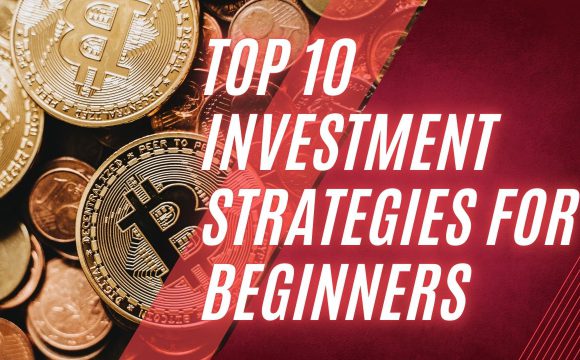Introduction: Why Diversification Deserves a Standing Ovation
In the world of investing, diversification is akin to a well-composed symphony—every instrument has its role, creating harmony and balance. Just like jazz musicians thrive on improvisation while still respecting the rhythm, a balanced portfolio can help investors navigate the unpredictable landscape of the financial markets. The essence of diversification is simple: balance risk and reward. In this article, we will unwrap the many layers of diversification, offering humor and clarity along the way.
Understanding Risk and Reward
To grasp the power of diversification, one must first understand risk and reward. Risk in investment terms can be defined as the potential for losing money or not achieving expected returns. On the flip side, reward is the potential gain from an investment. The risk-reward spectrum is where the magic happens: while high rewards often come with high risks, not every promising investment is a golden opportunity. It’s essential to strike a balance—don’t put your hard-earned cash into a scheme just because it glitters!
The Fundamentals of Diversification
At its core, diversification means spreading your investments across various assets to reduce risk. The timeless advice of not putting all your eggs in one basket rings true here; a cracked basket can spoil a dozen eggs. Historically, investors who embraced diversification fared better during market downturns than those who clung to single stock dreams. So, the next time you’re tempted to chase a hot stock, remember that your grandma was onto something important!
Types of Diversification
- Asset Class Diversification: This involves mixing different asset types, such as stocks, bonds, real estate, and commodities. Each asset class responds differently to market conditions, thus cushioning your portfolio against volatility.
- Geographic Diversification: Investing beyond your local market can enhance returns. Think global! If your hometown dips into a recession, your investments in other regions could save the day.
- Sector Diversification: Hedge your bets by investing across various sectors like technology, healthcare, or consumer goods. Each sector faces unique challenges and opportunities, providing a safeguard against sector-specific downturns.
Building a Diversified Portfolio
Creating a diversified portfolio begins with assessing your risk tolerance. Are you a daring investor, ready to surf the wild waves of volatility, or are you more of a steady turtle who enjoys a slow yet stable pace? Understanding your investment style is critical for building a solid foundation.
Once you’ve assessed your tolerance, it’s time to craft a balanced mix. This is where the fun begins! Imagine whipping up a delightful stew, mixing different ingredients for the perfect flavor. A well-rounded portfolio blends aggressive, growth-oriented assets with more stable investments, creating a delicious balance.
Don’t forget to regularly rebalance your portfolio. Like a skilled juggler, it’s essential to keep your investments in check to maintain that harmonious balance. When a particular asset takes off, it may become unproportionately large within your portfolio, so it’s wise to trim and keep things in check.
Common Mistakes in Diversification
Even the best investors slip up! Over-diversification is a common pitfall, where holding too many assets diminishes your portfolio’s growth potential. Think of it this way: too many cooks can spoil the broth, making your portfolio unwieldy.
Another mistake is overly focusing on correlation—remember, not every relationship in your portfolio is meant to last! Relying solely on correlated assets can lead to disastrous outcomes when the market swings.
Lastly, don’t fall prey to the allure of shiny objects. Quality often trumps quantity. It’s better to invest in fewer, high-quality assets than to scatter your money thinly across dozens of average investments.
The Role of Mutual Funds and ETFs
Navigating the world of diverse investments can be confusing, but mutual funds and ETFs (exchange-traded funds) are like trusty guides. Mutual funds pool money from multiple investors to invest in various assets, offering built-in diversification without the headache.
ETFs, on the other hand, provide a more hands-on approach, allowing you to buy and sell shares like stocks while still achieving diversification. While they’re generally more cost-effective than mutual funds, understanding their nuances is vital.
Index funds are another hidden gem for passive investors, as they track a market index, offering broad exposure without the effort of managing individual stocks. Consider index funds as the lazy river of investing—once you’re in, you can just float along and enjoy the ride.
Behavioral Biases and Diversification
Human emotions can wreak havoc on investing decisions. Recognizing emotional biases is essential; letting feelings dictate your investments can lead to regret. For instance, the herd mentality tempts people to follow the crowd, often resulting in disastrous investments. Just because everyone is jumping on a hot trend doesn’t mean you should, too!
To combat these behavioral biases, develop strategies that keep you grounded. Set clear investment goals, establish a well-researched plan, and stick to it. Remember, the tortoise wins the race!
Monitoring and Adjusting Your Diversified Portfolio
Once your diversified portfolio is in place, it’s crucial to keep an eye on its performance. Regular check-ups are essential. Think of your portfolio like a plant—it needs care and attention to thrive.
Stay informed about economic trends and market volatility. Knowledge is power, and understanding the contexts affecting your investments allows you to make informed decisions. Knowing when to sell is equally important—timing is everything, or mostly everything!
The Myth of “Set It and Forget It”
Many investors dream of a hands-off investment approach—a “set it and forget it” philosophy. However, in reality, this can be dangerous. Markets change, and remaining passive could lead to missed opportunities. Staying engaged with your investments keeps you from waking up with a surprise haircut!
Regular portfolio reviews act like a yearly medical check-up for your finances. Assess your performance, adjust your strategy, and ensure your investments align with your goals.
Balancing Short-Term vs. Long-Term Investments
Understanding the difference between short-term and long-term investments is crucial. It’s essential to define your investment horizon: do you need results tomorrow, or can you wait a few years to see significant growth?
Balancing these timelines is key. Short-term gains can be exhilarating, but the stability of long-term investments usually leads to a more successful financial journey. Craft a strategy that accommodates both, allowing yourself to reap immediate rewards while still nurturing your future financial health.
The Influence of Market Conditions
Market cycles can feel like a rollercoaster—thrilling, yet slightly terrifying. Understanding these cycles is vital; adapting your diversification strategy during different market conditions can save you from undue stress.
Whether the market is booming or dipping, be flexible and ready to adjust your strategy. Learning from seasoned experts will provide valuable insights and help you navigate the unpredictable twists and turns the market may throw your way.
Tax Implications of Diversification
Let’s face it: talking taxes isn’t the most fun topic, but it’s important! Diversification affects your tax situation in various ways, and ignoring it could mean paying more than necessary. Understanding capital gains taxes and how different assets are taxed can help you maximize profits.
Explore strategies for tax-efficient investing. Consider putting your investments in tax-advantaged accounts like IRAs or 401(k)s. When in doubt, seek professional advice. Consult a tax advisor to categorize your investments wisely, ensuring you keep more money in your pocket for your future.
The Future of Diversification: Trends to Watch
The investing landscape is ever-changing. Keep an eye on emerging trends such as alternative investments—cryptocurrency might sound like a craze, but it’s suitable for future-focused investors willing to embrace new possibilities.
Sustainable investing, especially Environmental, Social, and Governance (ESG) investing, is gaining traction as investors seek to make a positive impact. It’s not just about the dollars; it’s about aligning your values with your investments.
Additionally, technology is reshaping the investment world. Robo-advisors are fantastic tools for automated, diversified portfolios, catering to those who might feel overwhelmed by overflowing investment information.
Conclusion: Embracing the Power of a Diversified Portfolio
In summary, diversification is a formidable ally in the realm of investing, allowing you to balance risk and reward effectively. By understanding its fundamentals, embracing different types of diversification, and avoiding common pitfalls, you can build a resilient portfolio ready for the ups and downs of the market.
Take the plunge—begin diversifying today! Your future self will thank you for avoiding the calamities that often come from poorly diversified portfolios. And remember, your investments should grow like a flourishing tree… but keep an eye out for pesky squirrels trying to nibble away at your hard work!
Call to Action: Join the Diversification Revolution
What are your experiences with diversification? Have you made some fabulous investment choices or faced the pitfalls of a non-diversified portfolio? Share your thoughts! And for more insights, resources, and tools to help with managing your portfolio, stay connected with us! We’re here to assist you—as long as you promise not to subject us to unsolicited wild investment tips!







